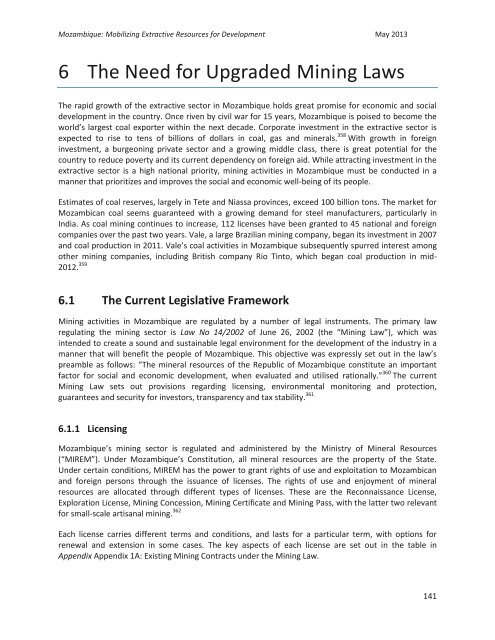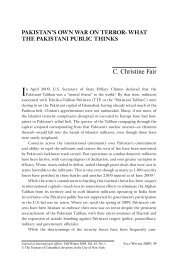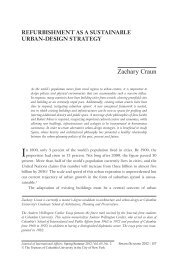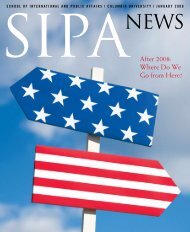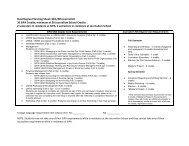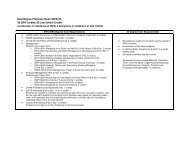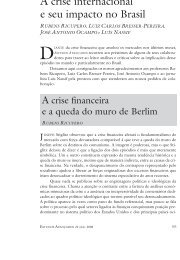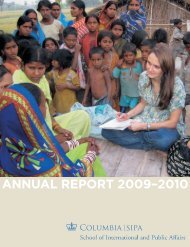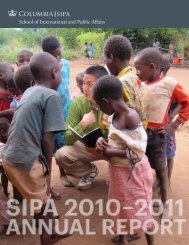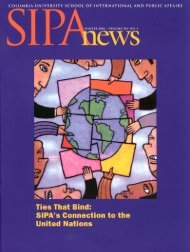Mozambique - School of International and Public Affairs - Columbia ...
Mozambique - School of International and Public Affairs - Columbia ...
Mozambique - School of International and Public Affairs - Columbia ...
You also want an ePaper? Increase the reach of your titles
YUMPU automatically turns print PDFs into web optimized ePapers that Google loves.
<strong>Mozambique</strong>: Mobilizing Extractive Resources for Development May 2013<br />
6 The Need for Upgraded Mining Laws<br />
The rapid growth <strong>of</strong> the extractive sector in <strong>Mozambique</strong> holds great promise for economic <strong>and</strong> social<br />
development in the country. Once riven by civil war for 15 years, <strong>Mozambique</strong> is poised to become the<br />
world’s largest coal exporter within the next decade. Corporate investment in the extractive sector is<br />
expected to rise to tens <strong>of</strong> billions <strong>of</strong> dollars in coal, gas <strong>and</strong> minerals. 358 With growth in foreign<br />
investment, a burgeoning private sector <strong>and</strong> a growing middle class, there is great potential for the<br />
country to reduce poverty <strong>and</strong> its current dependency on foreign aid. While attracting investment in the<br />
extractive sector is a high national priority, mining activities in <strong>Mozambique</strong> must be conducted in a<br />
manner that prioritizes <strong>and</strong> improves the social <strong>and</strong> economic well-being <strong>of</strong> its people.<br />
Estimates <strong>of</strong> coal reserves, largely in Tete <strong>and</strong> Niassa provinces, exceed 100 billion tons. The market for<br />
Mozambican coal seems guaranteed with a growing dem<strong>and</strong> for steel manufacturers, particularly in<br />
India. As coal mining continues to increase, 112 licenses have been granted to 45 national <strong>and</strong> foreign<br />
companies over the past two years. Vale, a large Brazilian mining company, began its investment in 2007<br />
<strong>and</strong> coal production in 2011. Vale’s coal activities in <strong>Mozambique</strong> subsequently spurred interest among<br />
other mining companies, including British company Rio Tinto, which began coal production in mid-<br />
2012. 359<br />
6.1 The Current Legislative Framework<br />
Mining activities in <strong>Mozambique</strong> are regulated by a number <strong>of</strong> legal instruments. The primary law<br />
regulating the mining sector is Law No 14/2002 <strong>of</strong> June 26, 2002 (the “Mining Law”), which was<br />
intended to create a sound <strong>and</strong> sustainable legal environment for the development <strong>of</strong> the industry in a<br />
manner that will benefit the people <strong>of</strong> <strong>Mozambique</strong>. This objective was expressly set out in the law’s<br />
preamble as follows: “The mineral resources <strong>of</strong> the Republic <strong>of</strong> <strong>Mozambique</strong> constitute an important<br />
factor for social <strong>and</strong> economic development, when evaluated <strong>and</strong> utilised rationally.” 360 The current<br />
Mining Law sets out provisions regarding licensing, environmental monitoring <strong>and</strong> protection,<br />
guarantees <strong>and</strong> security for investors, transparency <strong>and</strong> tax stability. 361<br />
6.1.1 Licensing<br />
<strong>Mozambique</strong>’s mining sector is regulated <strong>and</strong> administered by the Ministry <strong>of</strong> Mineral Resources<br />
(“MIREM”). Under <strong>Mozambique</strong>’s Constitution, all mineral resources are the property <strong>of</strong> the State.<br />
Under certain conditions, MIREM has the power to grant rights <strong>of</strong> use <strong>and</strong> exploitation to Mozambican<br />
<strong>and</strong> foreign persons through the issuance <strong>of</strong> licenses. The rights <strong>of</strong> use <strong>and</strong> enjoyment <strong>of</strong> mineral<br />
resources are allocated through different types <strong>of</strong> licenses. These are the Reconnaissance License,<br />
Exploration License, Mining Concession, Mining Certificate <strong>and</strong> Mining Pass, with the latter two relevant<br />
for small-scale artisanal mining. 362<br />
Each license carries different terms <strong>and</strong> conditions, <strong>and</strong> lasts for a particular term, with options for<br />
renewal <strong>and</strong> extension in some cases. The key aspects <strong>of</strong> each license are set out in the table in<br />
Appendix Appendix 1A: Existing Mining Contracts under the Mining Law.<br />
141


